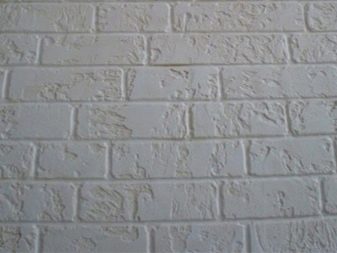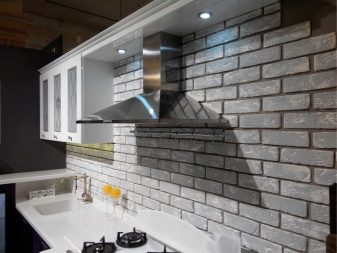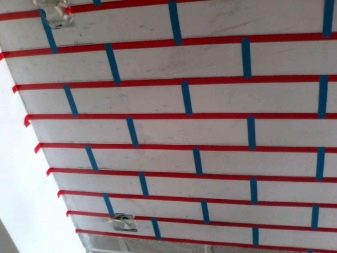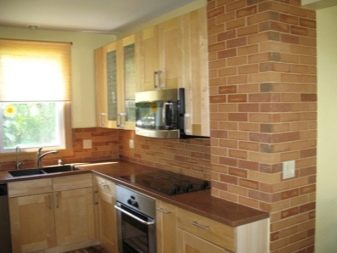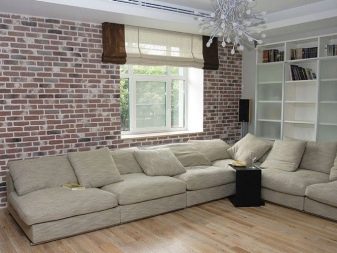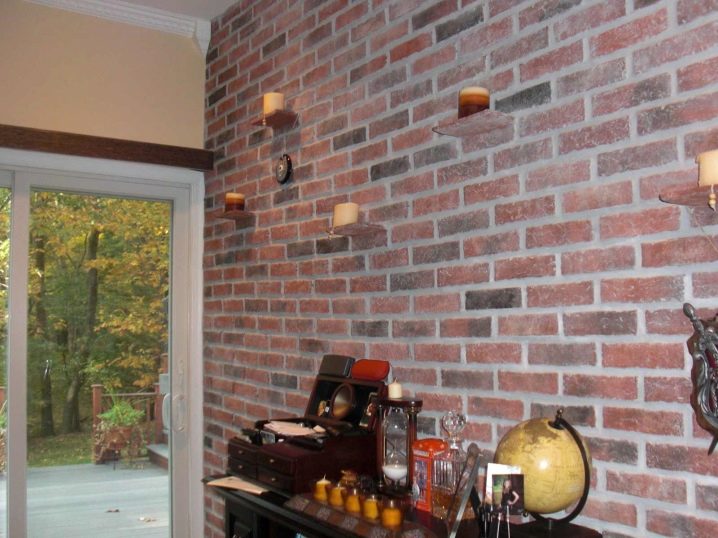Brick plaster: pros and cons
Nowadays, people increasingly use decorative plaster for interior decorating. Structured coatings are distinguished by aesthetics and excellent performance characteristics, they are suitable for a variety of interior styles. Many people choose decorative plaster under the brick, because such surfaces look very interesting. Let us consider in more detail the pros and cons of such materials, the main types of such a “masonry”, especially the use of compositions.
Special features
Consumers note a large number of advantages of plaster under the brick.
Among the main advantages of such coatings are the following:
- The ease of finishing work.Such materials are applied very simply, it does not require seeking help from experienced professionals. However, it is worth noting that the formation of the “masonry” itself will take time and patience.
- Such coatings are resistant to mechanical loads, durability, long service life (of course, much depends on how the finishing work was carried out). Plasters for bricks are suitable for a variety of premises.
- This material is very environmentally friendly, it is safe for human health.
- Such compositions provide heat and sound insulation in the premises.
- Such materials come in a variety of colors.
- The price of such coverage is quite affordable, they can afford consumers with different income levels.
If we talk about the minuses of the “brick” surface, we can note the peculiarities of its texture. In aesthetic terms, this is a plus, but in practical terms, there is an extra inconvenience, because various impurities quickly accumulate in the grooves. It is also worth noting that before applying such coatings it is necessary to prepare the bases as thoroughly as possible. Otherwise, the “clutch” will not look beautiful.
Kinds
For the implementation of the interior under the brick using decorative plaster, you can use different methods.
Options may be:
- the use of gypsum tiles (it can be used to imitate a brick);
- putting the image on the textured plaster (it must be raw).
Of particular popularity is such an option as drawing on the surface of the picture. By choosing this method, you can save a lot, because buying a large amount of materials is not necessary.
Design
Creating an imitation of brickwork on plaster is quite a fascinating and creative process (especially if you paint the bricks yourself). You can slightly twist the seams: so the surface will look very interesting. You can create the illusion of real masonry with the help of light negligence.
A wall decorated with bricks can look as natural as possible: for this you need to paint them in a natural color. However, there are other options, brighter and more unusual. Some highlight the seams, making them darker.
You can experiment with both forms and surfaces.Leave the bricks rough, uneven or make them as smooth as possible - in both cases the wall will look very interesting. Aged surfaces are very suitable for some designs. To achieve this effect, you can make a special treatment.
There are various options: imitation of a beautiful facing brick, "street" clinker or even stylization under antiquity. You can make the coating geometrically verified, neat or give the surface a deliberately rough look.
It is not necessary to decorate the whole room with imitation of brickwork. This decor is even better to combine with more traditional finishing materials: tiles, paint, wallpaper.
The following options are popular:
- Decorating various openings (window, door), arches. So you can make the object more attractive, give it individuality. It is also worth noting that surfaces with such a finish are more resistant to various mechanical stresses.
- Plots with "laying" can be located chaotically. With this technique, you can select certain elements of the interior (paintings, fireplaces, mirrors).
- It is possible to finish with “brick” one wall in the room.This version of the use of plaster under the brick is the most popular: you can select the most beautiful place in the room.
Tips and tricks
Before using decorative plaster, it is necessary to align the walls. Preliminary preparation is very important: if you ignore this stage, over time, the coating can begin to flake off, crack.
You will need to do the following:
- remove old coverings from the wall, wallpaper;
- eliminate chips, gouges, cracks and other similar defects;
- put plaster on the most problematic places.
Before using a decorative material is to apply a primer on the wall. It must be selected based on the type of base. It depends on the amount of primer material.
What is better to choose?
If you want to get an imitation of brickwork, it is better to stop the choice on plaster plaster.
Preference should be given to materials that have the following advantages:
- environmental friendliness;
- no shrinkage;
- ease of use.
It is not recommended to mix cement tile glue and plaster plaster material.Otherwise, the coating will crack, peel off from the surface.
Use scraper
If you plan to apply gypsum plaster, prepare the following tools:
- plastering rule;
- steel spatula (blade should be quite wide - about 25 cm);
- the jointing that masons use;
- less wide trowel (up to 10 cm wide): such a tool would be convenient to use for correcting minor defects;
- scraper (you can use a homemade steel plate, chisel).
Calculate the surface area you will treat, it should focus on the amount of material prepared. When a primer is applied to the surface, use plaster. Apply a layer of material and make it as smooth as possible.
The creation of seams can be started when the mortar dries: use a long building rule for this. The optimum joint width is up to 10 mm. When creating seams, consider the pattern that you want to get.
Having outlined the seams, treat them using a scraper. With this tool you will need to remove excess plaster.How deeply the seams have to be cleaned depends on the design idea. You can get a certain shape using the jointing.
Masking tape
Some prefer to use masking tape for imitation brickwork. This method of work is more laborious, because the tape is quite difficult to remove from the surface. A piece of plaster can be removed from the wall along with tape. After removing the tape, you will need to additionally process the seams, "bricks".
If you still chose this method, apply a primer on the surface and mark future seams using a pencil. Apply masking tape to lined seams. The ends of the adhesive tape must be outside the area you are processing.
Using a spatula, apply a plaster mortar to the surface. Plaster will need to be covered also with adhesive tape on the seams. Then make the layer as smooth as possible. When the material dries, carefully remove the tape by pulling on its ends. Do not tighten with the removal of adhesive tape, because then the plaster will harden, and this will be much more difficult.
After receiving the seams, you will need to correct the drawing and wait for the coating to completely dry. To make the edges smooth and smooth, you can treat them with a damp sponge.
Coloring
So that the plaster with imitation of brickwork looks as beautiful as possible, you can make aesthetic surface finish. Many prefer to use coloring compositions. You can choose a standard paint or try to mix different paints to make the shade unique.
The coloring composition is usually applied in two stages:
- First, paint and varnish material cover the entire surface. To do this, you can use a spray or a brush.
- Using a brush, apply the coloring composition of the selected shade on the seams.
There are a variety of options for staining - it all depends on your preferences and imagination. You can make the seams white, highlight them with a dark color. Before applying the paint, you can treat the surface using emery paper: this way the wall will become as smooth as possible and the coating will be perfect.
For coloring imitation brickwork, you can choose gray, brown, reddish hues.Some people prefer not to paint the wall, but to add necessary dyes to the plaster. On the paint, you can additionally apply varnish: so the surface will become more aesthetic, besides the coating will be protected from fading. If you want to get a “rough” surface, use different coloring compositions that vary slightly in tones. So "laying" will be as natural as possible.
Imitation of brickwork will make the interior of the room more original. This design is suitable for a variety of styles. It is quite possible to cope with applying decorative plaster under brick: you just need to choose high-quality materials, use convenient tools and take into account certain recommendations.
Beautiful examples in the interior
Created by you "bricks" can look like expensive clinker products.
Accent wall with imitation brickwork significantly enlivens the interior.
"Masonry" may look deliberately careless.
Many people prefer to paint over the seams with a dark color. This is a common design option that is particularly well suited to the Scandinavian style.
On the pros and cons of plaster under the brick, see the following video.







